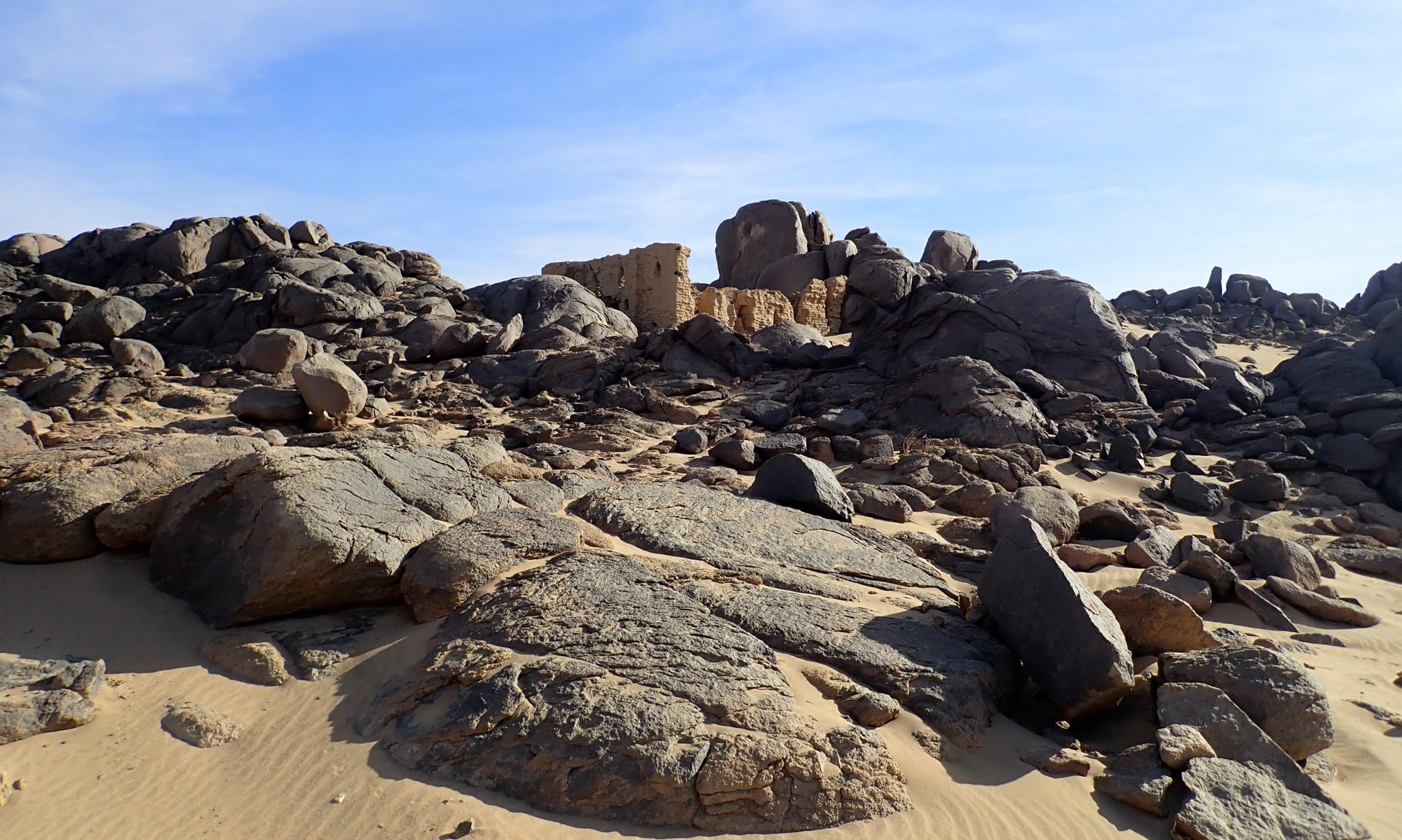The unique character of the church at Miseeda is an initial aspect of the project. It is an example of an active attitude of the Christian community to the past. The petroglyph of the unknown figure from Meroitic times can be analysed in its changing environment, raising more general questions about continuity and discontinuity of the elements of culture, and how their meaning and function changed during such a process:
• What was the original meaning and significance of the petroglyph? Its monumental character and size suggest that it was more than an occasional petroglyph.
• What was the significance of its location? Is there any reason to presume that it had a sacred meaning in pre-Christian times?
• How can it be dated more precisely?
• What is the place of the petroglyph in the context of the other rock-drawings and inscriptions in the direct surroundings that are contemporary to it?
• Going back in time, what was the meaning or importance of the place or the whole area before the moment that the petroglyph was made? Was it important for the decision to put the petroglyph in this very location?
• Was the area in any connection with the important nearby sites like Tombos, Sesebi, Duki Gel, or Kerma?
• Why was a church built in such a way that the petroglyph became the central part of its interior decoration?
• Is there evidence for a transformation in meaning of the petroglyph, and if so, how can the rock drawing in its Christian context be interpreted? In the case of an uninterrupted use of this spot this transformation may have been a gradual process in which a continuity of tradition may have played a role; in the case of a long interruption in the attention for the petroglyph, a Christian re-interpretation may have no roots at all in a pre-Christian tradition.
• Was there a predecessor to the present church, so that there is evidence for an uninterrupted attention to this drawing, or was the present church built centuries after the original meaning had been forgotten?
• What was the importance of this location on the trade routes from south to north and vice versa?
• The Third Cataract has been a natural border between the kingdoms of Makuria and Nobadia. Such natural borders tend to have a long life and in this case it still functions as a border between two different Nubian dialects. The church and its petroglyph will be investigated with the hypothesis in mind that border landscapes have specific characteristics and that also other rock-drawings are part of this (ritual?) landscape.
• What can the petroglyph and the church tell us about the meaning of the concept of ‘border’ in the broader sense of the word? This question is not only important for archaeologists, but for ethnologists and anthropologists as well [Kurki 2014].
